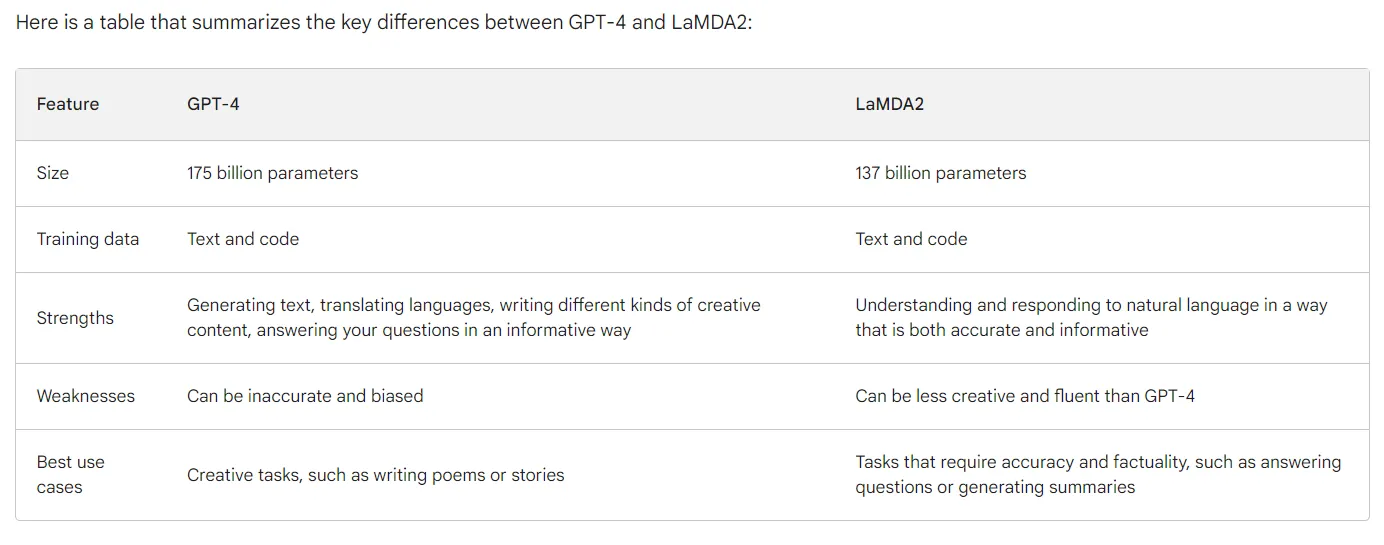A new rivalry is brewing in the world of AI developments. Google’s freshly updated AI chatbot, Bard, is giving OpenAI’s ChatGPT a run for its money, threatening to topple its hegemony.
On May 10, Google held its annual Google I/O conference and made Bard accessible to the world, introducing a series of upgrades aimed at keeping it ahead of the curve. Users can access Bard for free, and it’s now available in over 180 countries.
Google introduced Bard in February, but it was not too impressive. After hallucinating live and falsely claiming that the James Webb Space Telescope took the very first pictures of “exoplanets,” people quickly pointed out its flaws, Google’s stock sank, and its parent company Alphabet lost $100 billion.
That version of Bard was trained on a large language model called LaMDA. This new version runs on PaLM 2, which Google says “significantly outperforms PaLM while using significantly less compute at inference time.”
Google also announced different versions of its model. The lightest one, “Gecko,” is primed for smartphone integration which means you’ll be able to run it locally on your own Android device. Google also developed other more capable and powerful versions: Otter, Bison, and Unicorn.
For context, the most powerful version of the previous PaLM was trained on 540 billion parameters (3X the parameters used for GPT-3.5). Google didn’t disclose any more characteristics about these PaLM2-based models.
Bard vs ChatGPT: A five-minute comparison
Decrypt compared both models, and the results were very satisfactory. First, we asked it to translate a couple of phrases from English to Spanish and vice versa. These were phrases that, if translated literally, would not make any sense. Both provided a good result, but Google gave us more context to properly understand their meaning, not just their translation.


ChatGPT’s reply
When it comes to coding, Bard is a clear winner. Supporting over 20 programming languages, it can help professionals with code generation, explanation, and debugging. ChatGPT is also able to generate snippets of code, but it takes a considerably longer time. In our test, we asked both chatbots to create a simple HTML file with a button that shows an emoji every time we press it; ChatGPT took about 30 seconds, whereas Bard provided an answer almost immediately.


Internet connectivity is also a major plus. We asked the two models for the differences between OpenAI’s GPT-4 and Google’s PaLM2. ChatGPT couldn’t reply because it was limited to information from before 2021. Bard said this:

It then provided more details and technical information about each model.
We cheated a little bit and asked the same question to Microsoft’s Bing—which also uses GPT-4. It said: “GPT-4 is larger and has been trained on a wider variety of data, which gives it a wider range of capabilities … PaLM 2 is smaller and has been trained on a more focused dataset, which gives it better accuracy and less bias.”
Bing provided sources to back up its information. Bard didn’t. This can make it easier to spot possible fake news, unbacked claims, and hallucinations. Also, ChatGPT let us access our previous interactions, whereas Bard only showed us the title of our queries and nothing else.
Conclusion
People have been using ChatGPT for a while, which is key for prompt engineering, tips sharing, and social adoption (ChatGPT has become a household name in tech–Bard hasn’t yet). However, the fact that Bard is free and the GPT4-powered version of ChatGPT is $20 a month could be key to giving the trophy to Google’s chatbot, for now.
OpenAI has promised to update ChatGPT to make it multimodal and compatible with plugins, and Google is doing pretty much the same. In this era of AI-powered chatbots, Google, Microsoft, and Meta are vying to provide the most innovative and powerful offerings.
While OpenAI’s ChatGPT had the early mover advantage when it launched in September 2022, Google is not one to be left behind.

